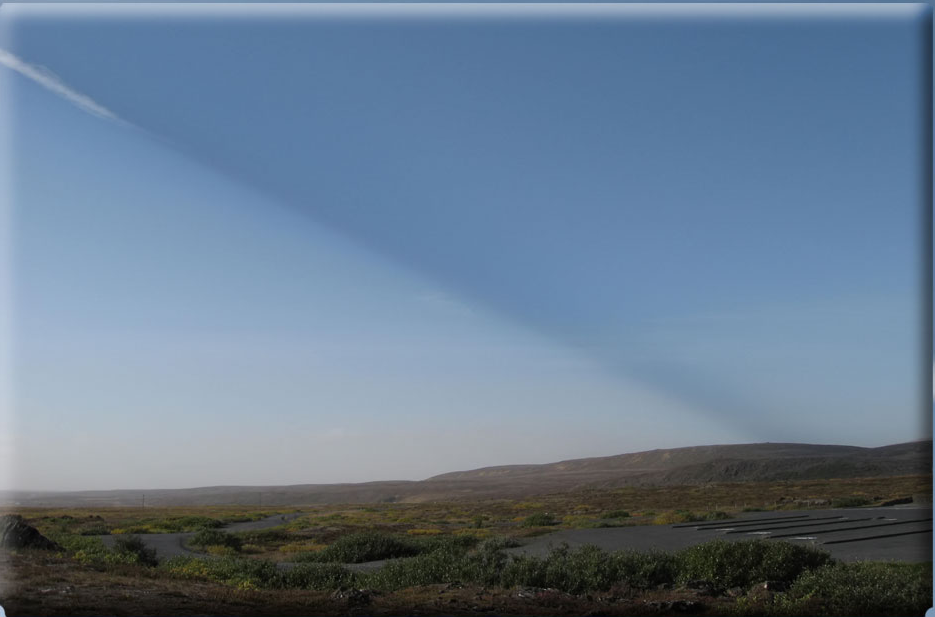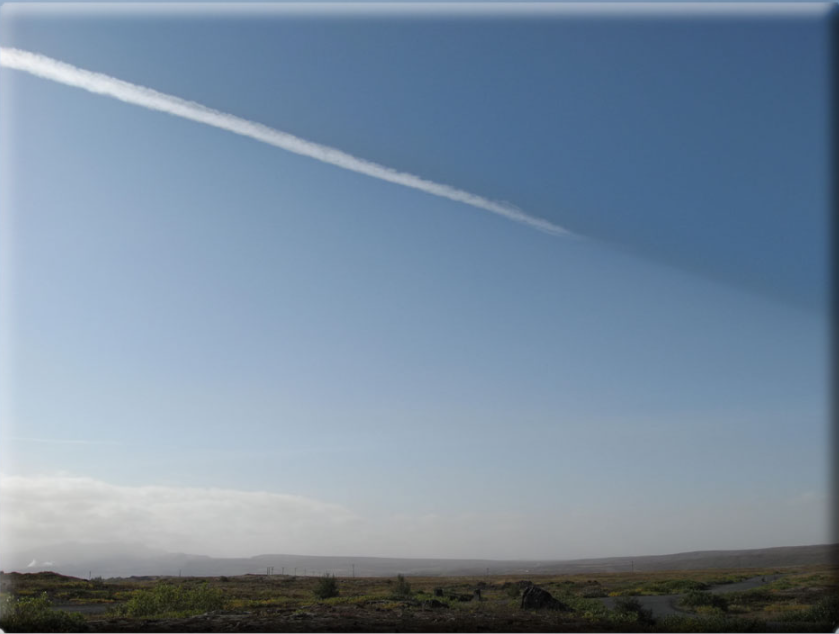OPOD - 3D Contrail Shadows
OPOD - 3D Contrail Shadows: A Fascinating Atmospheric Phenomenon
Have you ever noticed shadows cast by contrails in the sky? These ethereal shadows can create a mesmerizing display, adding another layer of wonder to our atmospheric optics. In this article, we will delve into the intriguing world of 3D contrail shadows, exploring their formation, characteristics, and the unique visual effects they produce.
Contrails, short for "condensation trails," are the long, narrow clouds formed by the exhaust of aircraft engines at high altitudes. As these contrails interact with the ambient atmospheric conditions, they can cast intriguing shadows on the surrounding haze. Unlike the two-dimensional shadows we are accustomed to, these contrail shadows exhibit a three-dimensional quality, creating a captivating visual spectacle.
The phenomenon of 3D contrail shadows was captured in a stunning image taken by Fred Watson at Thingvellir, Iceland. The photograph showcases the intricate interplay between the contrail and its shadow, beautifully illustrating the depth and complexity of these atmospheric phenomena.
To understand the formation of 3D contrail shadows, we need to consider the underlying physics at play. When sunlight interacts with a contrail, it scatters and refracts through the tiny ice crystals present within the cloud. This scattering process causes the contrail to appear bright against the background sky. Simultaneously, some of the sunlight is obstructed by the ice crystals, casting a shadow onto the surrounding haze.
The characteristics of 3D contrail shadows can vary depending on several factors. These include the altitude of the contrail, the angle of sunlight, and the density and composition of the surrounding atmospheric particles. Higher altitude contrails tend to cast longer shadows due to their increased distance from the ground. Additionally, the angle of sunlight can influence the length and direction of the shadow, creating dynamic patterns in the sky.
One fascinating aspect of 3D contrail shadows is their interaction with other atmospheric phenomena. These shadows can intertwine with other optical effects, such as halos, iridescence, and even sundogs, resulting in a mesmerizing interplay of colors and shapes. The combination of these atmospheric phenomena can produce a truly awe-inspiring spectacle, captivating observers and sparking curiosity about the mysteries of our atmosphere.
The study of 3D contrail shadows not only offers aesthetic value but also provides valuable insights into atmospheric physics. By analyzing the characteristics of these shadows, scientists can gain a deeper understanding of the distribution and composition of atmospheric particles. This knowledge contributes to our understanding of climate dynamics, aerosol behavior, and the overall health of our atmosphere.
In conclusion, 3D contrail shadows are a captivating atmospheric phenomenon that adds an extra layer of intrigue to our skies. These shadows, formed by the interaction of sunlight with contrails and surrounding atmospheric particles, create a three-dimensional spectacle that enchants observers. By studying these shadows, scientists can uncover valuable information about our atmosphere and its intricate workings. So, the next time you gaze up at the sky and spot a contrail casting its ethereal shadow, take a moment to appreciate the beauty and scientific significance of this remarkable phenomenon.

3D Contrail Shadows
Imaged at Thingvellir, Iceland by Fred Watson (Illuminating the Universe) of Australian Astronomical Observatory.
Unlike the previous OPOD's 2D shadows cast on a cloud screen, these are 3D shadows in hazy air.
©Fred Watson, shown with permission

Note: this article has been automatically converted from the old site and may not appear as intended. You can find the original article here.
Reference Atmospheric Optics
If you use any of the definitions, information, or data presented on Atmospheric Optics, please copy the link or reference below to properly credit us as the reference source. Thank you!
-
<a href="https://atoptics.co.uk/blog/opod-3d-contrail-shadows/">OPOD - 3D Contrail Shadows</a>
-
"OPOD - 3D Contrail Shadows". Atmospheric Optics. Accessed on November 26, 2024. https://atoptics.co.uk/blog/opod-3d-contrail-shadows/.
-
"OPOD - 3D Contrail Shadows". Atmospheric Optics, https://atoptics.co.uk/blog/opod-3d-contrail-shadows/. Accessed 26 November, 2024
-
OPOD - 3D Contrail Shadows. Atmospheric Optics. Retrieved from https://atoptics.co.uk/blog/opod-3d-contrail-shadows/.